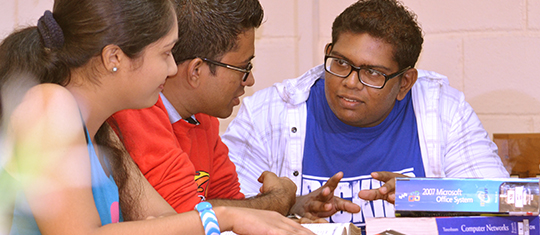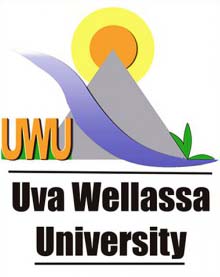Volume 04 Issue 01
01. Income diversification and household welfare in Sri Lanka
M.M.S.C. Senevirathna*, R.A.P.I.S. Dharmadasa
Department of Export Agriculture, Faculty of Animal Science and Export Agriculture, Uva Wellassa University, Badulla, 90000, Sri Lanka
INFORMATION
Journal Title : Journal of Technology and Value Addition
Volume : 4 Issue : 1
Page : 01– 22
Submitted : December 10, 2020; Revised: May 10, 2021; Accepted: May 22, 2021
Correspondence : cssulochana9@gmail.com
ABSTRACT
Oysters are a widely popular sea food in the world. However, after consuming soft edible parts, shells are discarded as a biological waste material although they have high mineral value. The aim of the percent study is developing novel zinc phosphate dental cement (ZPDC) by adding hydroxyapatite (HA) derived from waste oyster shells as reinforcing filler. Shells of Crassostrea madrasensis oyster species was selected for the study. First, oyster shells were crushed, grinded and sieved (< 63µm) to obtain CaO. The Ca(OH)2 precursor was prepared at room temperature by dissolving CaO in water. HA was synthesized using wet precipitation method and sintered at 800°C for 1 hour. X-ray florescence spectroscopy (XRF) was used to obtain the chemical composition of the raw oyster shells and Ca/P ration of synthesized HA. Our results showed that CaO (88.5%), SiO2 (3.78%), and Fe2O3 (3.15%) are the major components in these oyster shells and calculated stoichiometric Ca/P ratio was 1.7. The average particle size of sintered HA was around 1518 nm. The properties of developed HA were compared with commercial HA using Fourier Transform Infrared spectroscopy (FTIR) and X-ray Diffraction (XRD). It was indicated that results of sintered HA are compatible with the results of commercial HA. The resulted HA powder was added into zinc phosphate dental cement powder mixture in seven different ratios (0%, 1%, 2%, 5%, 10%, 20%, 50%) and different specimens were fabricated. In addition, mechanical properties such as compressive strength (CS), diametral tensile strength (DTS) and elution properties of the prepared specimens were determined. Among studied samples 10% HA added zinc phosphate cement was showed the highest CS (66.85 MPa) and DTS (18.88 MPa) with lowest elution percentages in water and aqueous lactic acid solutions of pH 5 and 3 respectively. Finally, it can be concluded that Hydroxyapatite synthesized from Crassostrea madrasensis oyster shells is an alternative reinforcing filler to develop the dental cement based on Zinc Phosphate.
Keywords: Zinc phospate dental cement, hydroxyapatite, Crassostrea madrasensis, oysters
2. Underrepresentation of Women in Science, Technology, Engineering and Mathematics (STEM)-Related Education and Careers in Sri Lanka
K. Kanakaratne *, J. Jayasinghe
* Department of Electronics, Faculty of Applied Sciences, Wayamba University Sri Lanka, Kuliyapitiya
INFORMATION
Journal Title : Journal of Technology and Value Addition
Volume : 3 Issue : 1
Page : 19 – 30
Submitted : August 13, 2020; Accepted: October 19, 2020
Correspondence : jkanchana93@gmail.com
ABSTRACT
In Sri Lanka, females are underrepresented in some of the Science, Technology, Engineering and Mathematics (STEM)-related fields at the tertiary level of education and also in some of the STEM-related careers. This paper analyses available statistics of undergraduate and postgraduate students and that of STEM-related professions viz. engineers, university academics and scientists to identify in which STEM-related fields women are underrepresented. More importantly, a survey was conducted among the females, who were unemployed for at least a six months period or who are currently unemployed, with the aim of identifying the reasons for unemployment. In addition to the information related to unemployment of responders, their suggestions were obtained to identify the ways and means of creating a conducive work environment for females. Hence, results of the survey are presented and recommendations are given for making a better work environment.
Keywords: Science, technology, engineering, mathematics
3. Expertise Green Manufacturing Practices towards Sustainability
M.A.K.K. Shisara *, Y.N.S. Wijewardana
* Department of Engineering Technology, Faculty of Technological Studies, Uva Wellassa
University, Passara Road, Badulla, 90000, Sri Lanka.
INFORMATION
Journal Title : Journal of Technology and Value Addition
Volume : 3 Issue : 1
Page : 31 – 44
Submitted : October 22, 2020; Accepted: December 23, 2020
Correspondence : kalindukithmina9@gmail.com
ABSTRACT
Green manufacturing deals with conserving natural resources for future generations and recycling materials by improving the manufacturing process to mitigate environmental pollution from manufacturing industries. The implementation of green manufacturing practices in manufacturing industries has increased with the negative environmental impacts. However, there are various barriers to the implementation of green manufacturing practices. The objectives of this study are (i) to study the barriers and their implementing techniques on green manufacturing practices and (ii) to assess stakeholders’ viewpoints to implement green manufacturing practices to the manufacturing industries. An online questionnaire survey was used among 27 professionals to explore and identify the barriers, implementing techniques, and recommendations for improving green manufacturing practices. The results reveal that lack of awareness programs conducted by local institutions is the main barrier and give better advertising about green manufacturing is the main implementing technique of green manufacturing practices in the manufacturing industries. This study has been able to rank the barriers and their implementation techniques of green manufacturing practices through attitudes and perceptions of experts. Additionally, the results show that green manufacturing practices are a successful device for mitigating negative environmental impacts. This study will guide the manufacturing industries to focus on the main factors that will impact green manufacturing practices.
Keywords: Environmental impacts, green manufacturing, barriers, implementation techniques, online questionnaire
4. Optimization of Conditions for Extraction of Crude Protein from Hilsa kelee and Determination of Functional Properties of the Crude Extract
R.C.M. Jayathissa 1, R.A. Rupasinghe 1, A.G.A.W. Alakolanga 2, E.D.N.S. Abeyrathne 1*
1 Department of Animal Science, Uva Wellassa University, Badulla 90000, Sri Lanka
2 Department of Export Agriculture, Uva Wellassa University, Badulla 90000, Sri Lanka
INFORMATION
Journal Title : Journal of Technology and Value Addition
Volume : 3 Issue : 1
Page : 45 – 59
Submitted : July 11, 2020; Accepted: December 21, 2020
Correspondence : sandun@uwu.ac.lk
ABSTRACT
Karattaya (Hilsa kelee) is a marine pelagic species, mainly found in Indo-Pacific to the coast of East Africa. It is a seasonal fish species with a high catch during the season. But the demand is low due to its bony structure thus it is mainly used to produce fish meal. The objective of this study was to develop a simple and nontoxic method for extracting crude protein from H. kelee and determine the functional properties of the crude extract. Collected fish samples was blend and treat with 04 different ratios of sample: distilled water as 1:1, 1:2, 1:3 and 1:4. Salt extraction of samples were obtained by mixing the precipitates of water extraction with 5%, 10%, 15% and 20% (w/v) concentrated NaCl solutions at 1:10 ratio. Crude extraction was lyophilized and selected the best ratio and concentrate by using the yield and SDS-PAGE analysis. Antimicrobial, antioxidant and metal chelating properties of selected crude extract samples were determined. In yield analysis of water extraction, 1:4 ratio showed a higher yield in compared to others (p<0.05). In salt extraction, there was no any significant difference between yields (p>0.05), therefore 5% (w/v) ratio was selected as the best. Salt extracted Fish Protein Concentrates (FPC) had higher antioxidant activities (p<0.05). FPC had negative response for the Fe2+ chelating activity and antimicrobial activity against E. coli and Total Plate Count (TPC). It concludes that extracted FPC contains strong antioxidant properties while they do not show Fe2+ chelating and antimicrobial properties.
Keywords: Hilsa kelee, Fish Protein Concentrate, Protein extraction, Antioxidant property
5. Determinants of Mobile Phone Ownership in Sri Lanka: An Analysis of Individual Characteristics
S.K.N. Gamage 1*, P.S.K. Rajapakshe 2, S.H.T. Kumudumali 3
1 Department of Economics, Faculty of Social Science and Humanities, Rajarata University of Sri Lanka, Mihintale 50300, Sri Lanka
2 Department of Environmental Management, Faculty of Social Sciences and Humanities, Rajarata University of Sri Lanka, Mihintale 50300, Sri Lanka
3 Department of Operations Management, Faculty of Management University of Perdeniya, 20400, Sri Lanka
INFORMATION
Journal Title : Journal of Technology and Value Addition
Volume : 3 Issue : 1
Page : 60 – 74
Submitted : November 16, 2020; Accepted: December 11, 2020
Correspondence : naraddagamage@gmail.com
ABSTRACT
Technology is everywhere in modern human life. In the 21st century, the mobile phone has become a significantly improved communication tool, in both developed and developing economies. The facilities given by mobile telephones and prices of them determine people’s purchasing intention. Nevertheless, socioeconomic characteristics of individuals also affect significantly in making the buying decision. This study focuses on characteristics of individuals and how they effect on mobile phone ownership in Sri Lanka. The data of the study were collected from the World Bank Global Financial Database 2017. Probit Regression analysis was used to examine the probability of mobile phone ownership to individual variables of age, gender, income, education level, and employment status. The results indicated that variables of gender, age, income, education, and employment status of people are significant determinants of mobile phone ownership in Sri Lanka and age has a nonlinear relationship with mobile phone ownership. The Probit Regression revealed that females and poor are less likely to own mobile phones in Sri Lanka. Furthermore, employed persons are more likely to own mobile phones than unemployed people in Sri Lanka.
Keywords: Mobile phone ownership, individuals’ socioeconomic characteristics, probit regression, sri lanka
6. Production of Organic Fertilizers by Using Sugarcane Industry By-products of Sri Lanka: A Preliminary Investigation
B.R. Kulasekara1*, H.A.S. Weerasinghe1, B.D.S.K. Ariyawansha1
1 Sugarcane Research Institute, Uda Walawe, Sri Lanka
INFORMATION
Journal Title : Journal of Technology and Value Addition
Volume : 3 Issue : 3
Page : 75 – 88
Submitted :November 26, 2020; Accepted: January 13, 2020
Correspondence : kulasekaraya@gmail.com
ABSTRACT
Utilisation of the sugarcane industry by-products in Sri Lanka has immense potential. Hence, this preliminary investigation was conducted to find out the feasibility to produce organic fertiliser from the sugarcane industry by-products and to evaluate their nutritional characteristics favourable for sugarcane plant growth. Two consecutive experiments were included in the study. First, the organic fertiliser preparation experiment included 4 different mixtures of sugarcane trash, filter-mud and vinasse up to two months. The following pot experiment along with sugarcane variety SL 96 128 was conducted up to 3 months compared with 5 treatments that 3 types of organic fertiliser mixtures (OFMs) in 20 ton/ha level along with half of the recommended chemical fertilisers (CF), recommended CF and zero fertiliser (control). The results indicated that incorporation of trash slow down the decomposing process and the using only filter-mud and vinasse is more effective in organic fertiliser preparation and they are rich in macro and micro plant nutrients. According to pot culture, there is no phytotoxic effect on sugarcane plants from OFMs. Both soils that OFM (20 ton/ha) + half of recommended CF and recommended CF added are similarly rich in major plant nutrients. Plant height, shoot dry weight and total dry weight shows significant differences compared to the control. Meanwhile, the filter-mud and vinasse based OFM + half of recommended CF applied plants and recommended CF applied plants perform similarly in growth. Thus, the feasibility to use of sugarcane by-products to minimise chemical fertilisers in sugarcane cultivation is at a remarkable level.
Keywords: Sugarcane by-products, organic fertiliser, vinasse, filter-mud


